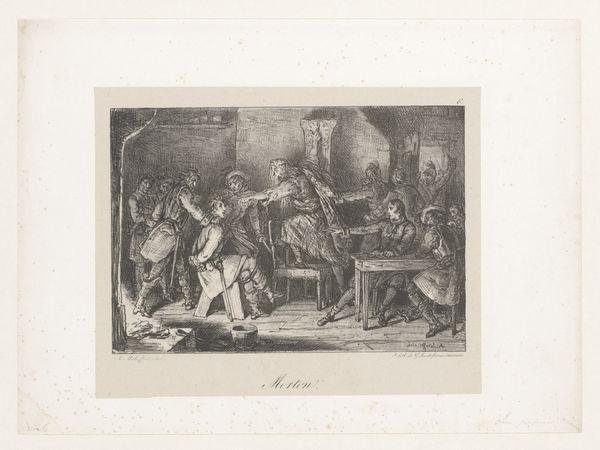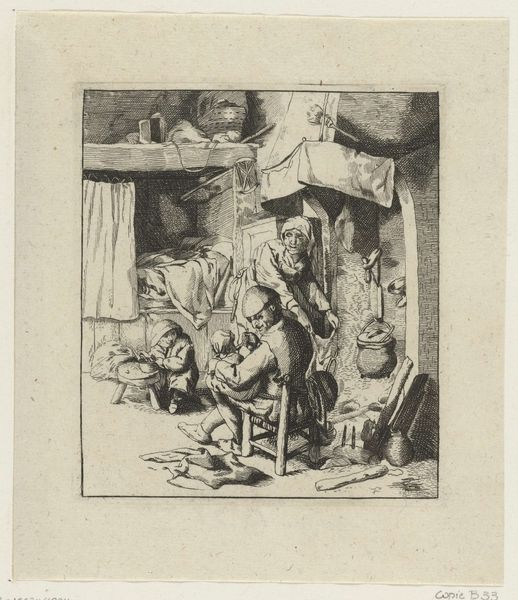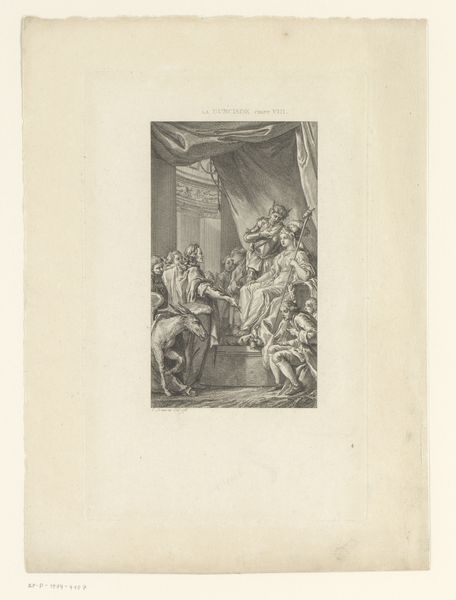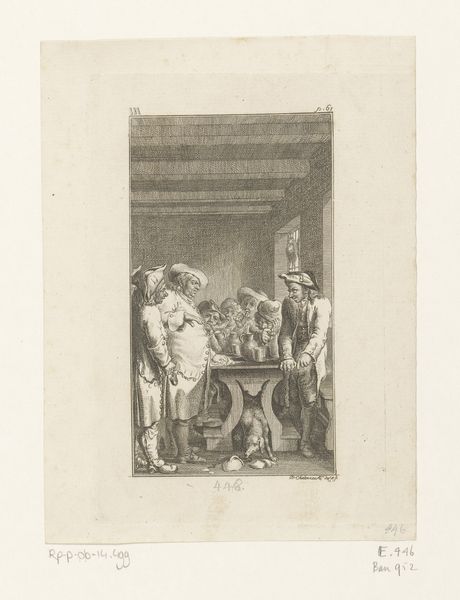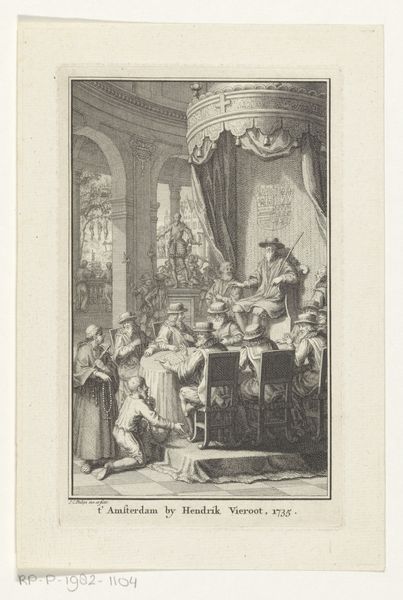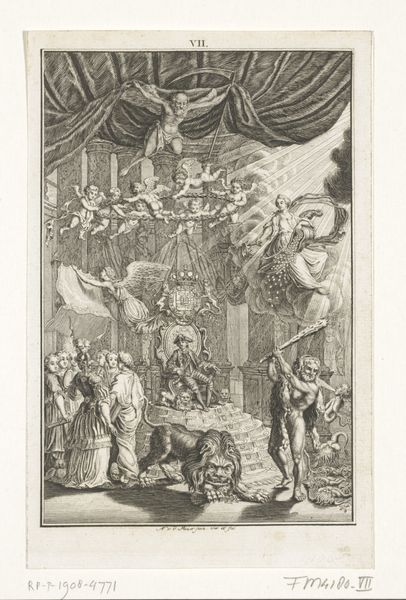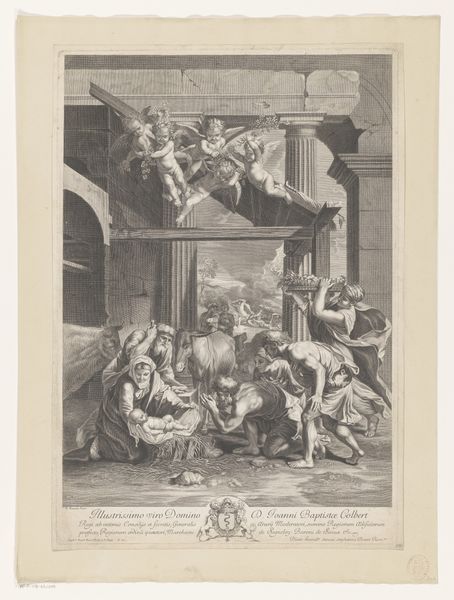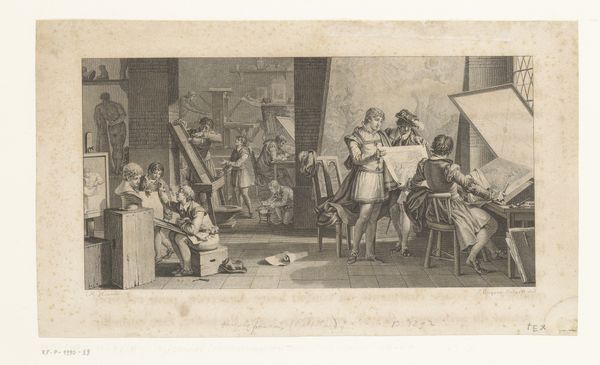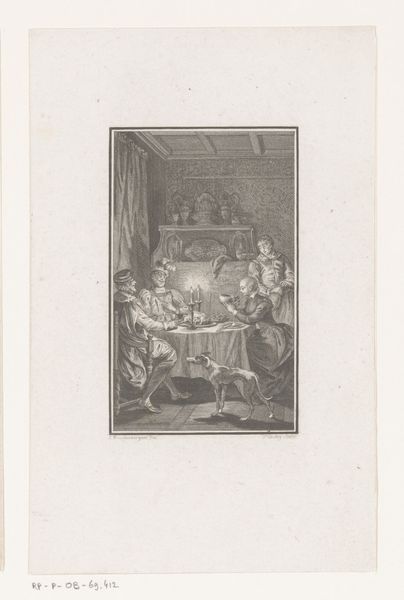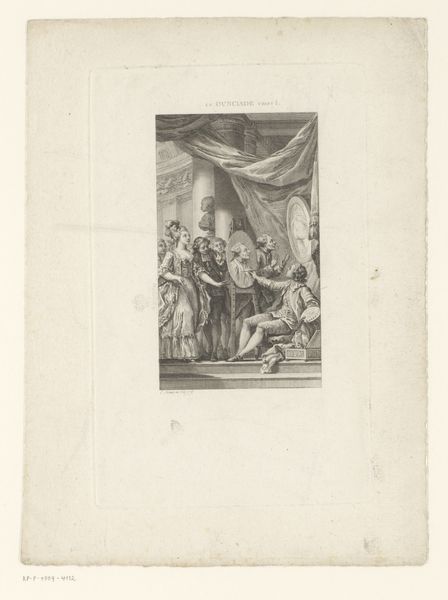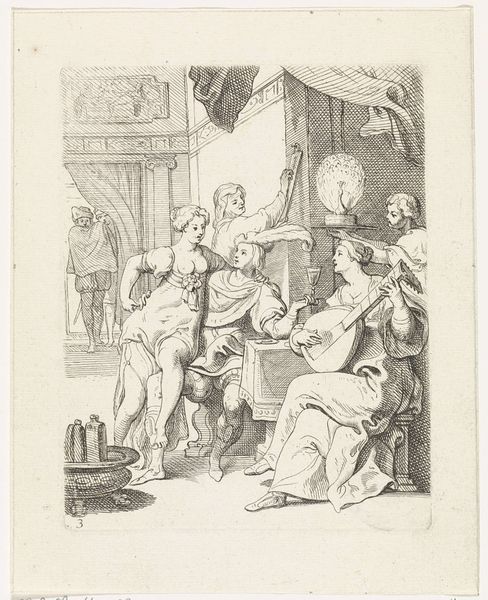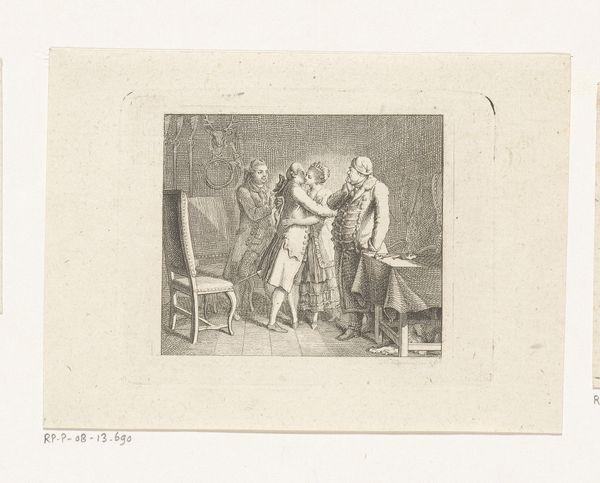
print, engraving
#
portrait
#
medieval
#
narrative-art
# print
#
old engraving style
#
genre-painting
#
history-painting
#
engraving
#
realism
Dimensions: height 179 mm, width 179 mm
Copyright: Rijks Museum: Open Domain
Curator: This engraving, simply titled "Oude man op sterfbed," or "Old Man on his Deathbed," dates sometime between 1805 and 1844. The artist is Ignace-Joseph de Claussin, and it currently resides in the Rijksmuseum. Editor: My initial impression is one of quiet intensity. The sharp lines of the engraving create a somber mood, further emphasized by the arch framing the scene, drawing all our focus to this intimate space. Curator: Indeed. The composition utilizes strong diagonals—look at the angle of the bed and the way the figures lean in—creating a sense of impending finality. Observe the contrasting textures achieved through the engraving technique, from the smooth planes of the faces to the detailed drapery of the bed curtains. Editor: The recurring symbol of the circle captures my attention. It repeats in the spinning wheel, the basin on the floor, and even implied in the shape of the figures clustered around the bed. Could this be a visual representation of the cyclical nature of life and death, an almost medieval memento mori? Curator: That’s an interesting reading, focusing on the overall thematic coherence. From a purely formal perspective, consider how the artist balances the light and shadow to create depth and volume. Note the sharp contrast defining forms within the composition. The engraving medium lends itself so wonderfully to precision. Editor: Absolutely. The cultural context, however, leads me to interpret that spinning wheel in another way: as a sign of traditional domesticity that is in sharp contrast with the man's fate. It is this dissonance which triggers an empathetic chord. And then I consider that small boy standing slightly back, observing the solemnity with childish curiosity, so suggestive of the family’s future. Curator: And in your interpretation you introduce an important element: temporality. But one can't help appreciating the pure craftsmanship. The balance of pictorial elements creates an unforgettable narrative. Editor: The artwork resonates with a profound human drama, brought to life by skillful visual cues. Curator: Agreed. De Claussin offers us a compelling example of dramatic narrative, rendered skillfully through line and tone.
Comments
No comments
Be the first to comment and join the conversation on the ultimate creative platform.
